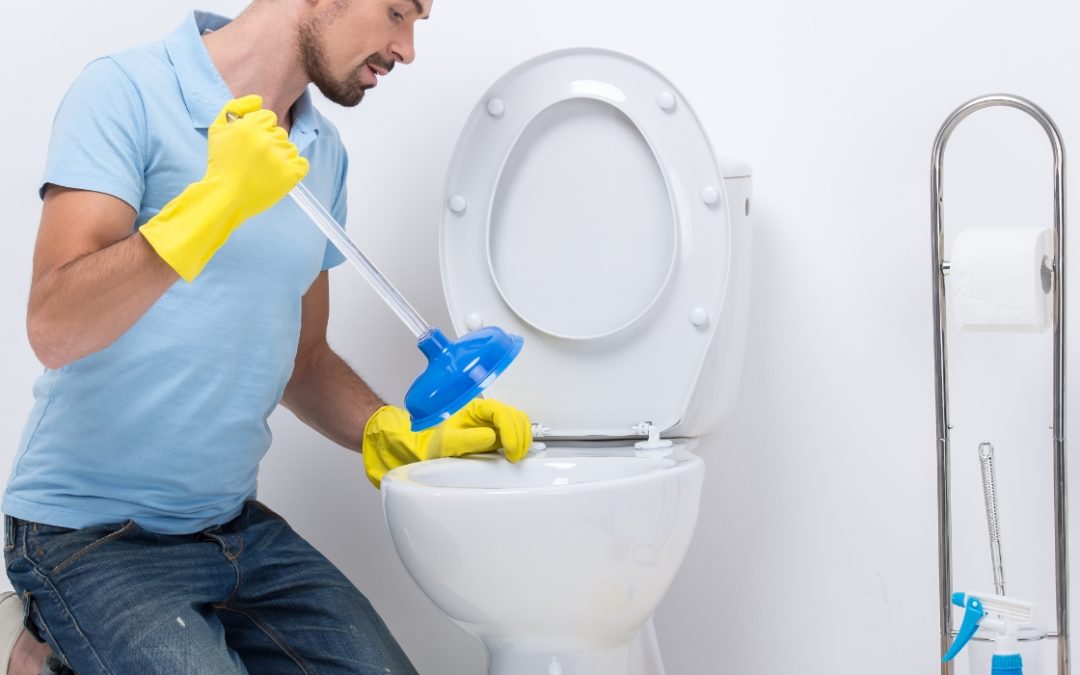If you’re wondering, “Why does my toilet drain slowly?” you’ve come to the right place. Here’s how to fix a slow, draining toilet and what you can do to help it resolve itself. Don’t worry if the problem doesn’t come from the toilet itself. These simple tips will help you unclog your toilet and see it running smoothly again. In the meantime, you can keep reading to discover the causes of a slow-draining toilet.
How do you fix a slow-draining toilet?
You can use a plunger or a plumber’s snake to fix a slow-draining toilet. This will help clear up any clogs that may have been lodged in the drainage system. If you can’t remove the clog yourself, you’ll need to call a plumber to come and fix the problem. Sometimes, feminine products and toys get stuck in the drain line.
If the problem has nothing to do with clogs, you can use a drain snake to clear the pipes. This tool is a long, plastic coil that you can feed into the toilet piping. This tool extends when you turn the handle counterclockwise. When used properly, a drain snake can reach as deep as 25 feet into the drainage system. To be safe, do not use a wire coat hanger. These can scratch or damage the porcelain.
If the toilet leaks, there could be a loose-fill valve or flapper. If it’s loose, the flapper won’t lift during flushing, and the water will drain from the tank more slowly. To repair this problem, you should turn off the water supply first. Then, you can install a new flapper and float ball. Once these parts are installed, the toilet should be in good working condition.
Will a slow-draining toilet fix itself?
You can try to clear the blockage by pouring hot water into the toilet bowl. You can also use dish detergent. But be careful not to use sharp metal wire hangers, as they can scratch the toilet bowl. If the problem persists, try to plunge it. Then, try flushing the toilet again. Hopefully, the blockage will be gone if it has not, call a drainage service.
Often, a clogged toilet can be cleared by pouring hot water into the bowl. A small amount of soap dissolved in the water will help break up the clog. The trick takes time, so be patient and allow the water to drain. After several hours, the water should drain properly. If the problem persists, contact a plumber. The cost of hiring a plumber may not be worth the risk.
Hot water and liquid soap are the most popular methods of unclogging a slow-draining toilet. To start, boil a pot of water and add some liquid soap. Let it sit for about 15 minutes before flushing. The reason for a toilet draining slowly is as simple as a clogged drain. Another cause of a slow flushing toilet could be the result of an open lift chain.
Another solution to clear the clog is to use dish soap in the toilet. Mix the vinegar and baking soda in the toilet and let it sit for at least 20 minutes. If that doesn’t work, try using enzyme cleaning products. These products are more expensive but break down grease and solids in the drain. These products are best applied overnight and flushed in the morning. Alternatively, add a little baking soda to the bowl overnight and let it work its magic. If this method does not work, try using a plunger. This tool fits over the toilet’s drain and forces water into the pipe.
Why won’t my toilet flush, but it isn’t clogged?
Non-flushing toilets can be incredibly frustrating, but they are usually fairly simple to fix. The most common culprits are clogged toilets – waste, paper, and foreign objects can get stuck in the pipes. Here’s how to fix them. Check the toilet’s jets.
The first problem is that the toilet is clogged. This can be caused by toilet paper or sanitary napkins. Plungers can help clear out these clogs by creating suction and pushing the waste through. If that doesn’t work, try using thinner toilet paper. It may also help prevent clogs. But if the problem persists, you should immediately call your plumber or a plumber.
The most common cause of clogged toilets is the overuse of toilet paper. When toilet paper and other materials get clogged, they don’t dissolve properly in water. As a result, a partial clog prevents the toilet from flushing properly. If the clog is only partially blocked, you can use a plunger to push it through.
What are the causes of a slow-flushing toilet?
If your toilet isn’t flushing well, there could be several reasons. Clogs, mineral buildup, or normal wear and tear can cause trouble for a slow toilet. If you notice that your toilet has become slow, the best way to fix it is to flush it several times. Here are some tips to solve your toilet’s slow flushing problem:
One of the most common causes of a slow toilet is hard water. The toilet’s flushing mechanism relies on a precise system of pressure physics. Without enough air in the plumbing waste lines, the toilet may have difficulty getting water to the bowl. To get rid of these deposits, clean the toilet’s siphon and rinse holes with a coat hanger. You can also try removing calcium deposits by scrubbing the toilet rim with a coat hanger.
Clogged drains and vents may also cause a slow toilet. In this case, you can use a plumber’s snake to flush the clogged pipe. Another cause is mineral buildup, which you can remove by flushing out the drain with hot water. Alternatively, you can use a toilet cleaner that dissolves mineral buildup. Try mixing baking soda with hot water if none of these options work.
Will bleach unclog a toilet bowl?
Whether you’ve got a stubborn clog in the toilet or are looking for a quick fix, a simple bleach treatment can unclog a toilet in minutes. Bleach is a chemical that corrodes several surfaces, including toilet bowls and piping. Before using bleach to clean a toilet bowl, wear eye goggles and rubber gloves. It’s also important to ensure that the area is well-ventilated. To protect yourself from dangerous fumes, open windows and doors and turn a fan on.
If you want a fast fix, try putting a cup of bleach into the toilet bowl and flushing it. However, be sure to follow the instructions carefully and rinse thoroughly. Leaving bleach in the toilet for too long can lead to overflowing, affecting other areas of the house. After the bleach is applied, rinse the bowl thoroughly and wait at least 15 minutes before flushing.
While bleach can unclog a toilet bowl, it’s not a recommended solution for removing stubborn stains. You should wear gloves and open windows to allow adequate air circulation, and let the bleach sit for 5 to 10 minutes before flushing it. Bleach also has a disinfecting effect, so you’ll want to keep it in a well-ventilated room while you’re using it.
What is the strongest thing to unclog a toilet?
A clogged toilet is not a problem that comes along occasionally. Sometimes the water level rises above the bowl’s edge, but you can unclog it with a few simple steps. First, pour one-fourth cup of baking soda into the bowl. Then, remove some water and pour the remaining baking soda into the bowl. Repeat the process until the water level returns to normal.
A plumbing snake is one of the most effective tools for stubborn clogs. Various types are available, but they all work in the same way. The plumber snake works by inserting its flexible end into the toilet drain and twisting it to break up the clog. The snake is too large to reach the clog at once, so use it carefully and slowly. Make sure you don’t accidentally rip the toilet’s porcelain, and do your best to remove it properly.
Another effective way of unclogging a toilet is to use a mixture of warm water and dish soap. Usually, this method works well for mild toilet blockages but not for major ones. Dish soap can allow the clog to slip through the pipes. But it’s important to note that dish soap is ineffective alone, so you will also need to use it with a hot water solution.
Is there something wrong with my toilet tank?
The most obvious indicator that something’s wrong is that your toilet tank is empty and has no water. Fortunately, this problem is easy to repair. Older-style toilets typically have a float ball that controls the water level and stops the water flow once it reaches a certain height. A low float ball causes a lack of water in the tank. To fix this issue, remove the lid and follow the instructions provided by the manufacturer of the new float ball. If your toilet tank fills itself to the recommended level, you will get the speed and pressure needed for an effective flush.
Most leaks are caused by the valve seat or the flapper not fitting tightly into it. If you can locate the cause of the leak, tightening or replacing the flapper and gasket may be enough. In some cases, water may be leaking from the overflow tube. Make sure that the valve in the overflow tube is securely in place. If the water continues to overflow the tank, it’s probably a valve issue.
Another possible cause of a leaky toilet tank is the plunger. A leaking toilet plunger can look like a flushed toilet. If you suspect a leaky toilet, you can use a coloring dye to confirm the issue. Add a little coloring dye to the tank and leave it there for five to ten minutes. If you observe colored water, the plunger is leaking.
Conclusion
Toilet paper and human waste are the only things that should be flushed down the toilet. If a comb, a toy, or another object has fallen into the toilet, that can cause a problem. The best solution to clean mineral deposits around the rim is to have a handy toilet brush with an under-rim lip brush. Another reason the tank might not fill after each flush is because of mineral deposits that build up over time. The toilet tank lid should be removed and stored safely.
When the toilet refuses to drain, you can often solve the problem by using a plunger. It’s important to note that a toilet plunger differs from a sink plunger. A sink plunger is simply a cup-shaped disk. Generally, a toilet plunger consists of a collar or flange at the bottom that projects upward. The flange creates a seal between the bottom of the toilet and the plunger, greatly increasing the force you can create in attempting to release the clog. If your tank is full of water and your drain is free and clear, the problem may be with the jet holes along the rim of your toilet. The pressure is reduced as mineral deposits accumulate around these jet holes with every flush. Underneath the toilet bowl rim is jet holes. The jet holes are also rimmed holes and flush the waste down the drain. Fresh water is pumped into the tank through these holes after flushing. Perform all these tips frequently to keep toilet drains clear and flushing fast.



